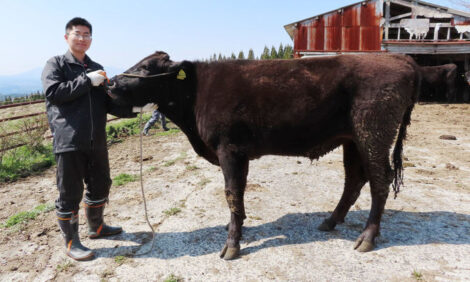



The Codex Perspective on Ractopamine
The veterinary drug ractopamine recently underwent further evaluation by the Codex Alimentarius Commission to decide if it should be included on the the priority list of substances for re-evaluation by the Joint FAO/WHO Expert Committee on Food Additives (JECFA), writes Adam Anson, TheCattleSite.The Commission had earlier agreed that it would decide on the adoption of maximum residue levels (MRLs) for ractopamine based on evidence brought forth at an earlier session.
During the discussion, the Chairperson of the Committee on Residues of Veterinary Drugs in Foods informed the Commission that they had concluded there was no significant new data available that would justify the inclusion of ractopamine in the Priority List for complete re-evaluation by JECFA and that European Community.
However, the session ended without final adoption of a maximum residue level for ractopamine due to new food safety evidence submitted by China. The Delegation of China, supporting the European Community, briefly reported on their residues studies, which showed residues levels in muscle, liver and kidneys exceeding the draft MRLs, as well as very high levels of residues in lungs.
The Delegation pointed out that China and the European Community were the largest producers and consumers of pig meat in the world and that, in China and other Asian countries, animal internal organs, including lungs and liver, were also regularly consumed.
However, the U.S. delegation to Codex expressed disappointment in the commission's decision to delay adoption of a maximum residue level for ractopamine, and urged that the review of information from China be completed by the Codex meeting in July, 2010.
About Ractopamine
Ractopamine is a veterinary drug that is used to boost meat gains in pigs and cattle by driving nutrients away from fat production and into the muscle.
This creates a leaner and heavier carcass which is ultimately more valuable than it would otherwise be. However, questions of ethics and food safety have been brought into question.
These concerns have led to a divided global community. Ractopamine is currently banned in 160 countries including the EU, China and Taiwan, where punishment for its use includes fines and imprisonment. Imported meat is tested and turned away if traces of ractopamine are discovered.
However, 24 counties support the use of ractopamine and the World Trade Organisation have supported residual trace of ractopamine in measured amounts. The US first approved ractopamine back in 1999 for use in pigs, then in 2003 it was also approved as a growth promoter in cattle.
Ractopamine is a product of Elanco technology, a company owned by Eli Lilly. It trades under the name Optaflexx for use with cattle. For cattle fed with Optaflexx, the additional weight gain is about 14.2 lbs when fed with 200 mg per head per day.
Feed efficiency is also said to improve by up to 15.9 per cent. The net increase to cattle producers who use the drug averages $8.00 per head. According to industry data, red meat yield is increased with no affect on marbling.
Food Safety Concerns
One of the major issues with the use of ractopamine is that there is no clearance period prior to slaughter which would rid the meat of most residues before human consumption. Whilst other drugs require a clearance period of two weeks, such a measure would severely reduce the benefits of using ractopamine.
Following a request from the European Commission, the European Food Safety Authority (EFSA) was asked to provide an opinion on the JECFA evaluation for ractopamine hydrochloride, having consulted and closely co-operated with other organisations such as EMEA and the Community Reference Laboratory responsible for beta-agonists (BVL in Berlin).
According to the opinion, released by EFSA in April 2009, the metabolic fate of ractopamine hydrochloride is similar in the target species (pigs and cattle), laboratory animals and humans. The authority says that ractopamine is a cardiac stimulator, belonging to a class of drugs that binds to beta-receptors in the heart. Ractopamine has the effect of restricting blood vessels and quickening the heart.
There have also been suggestions that ractopamine may a carcinogenic substance and may that its use leads to poor animal welfare, putting pigs and cattle under undue stress. However, these claims carry no scientific proof.
According to the EFSA panel, significant subpopulations which may be at higher risk for adverse events after beta-adrenergic stimulation require particular consideration when estimating the safety factor. "Attempts to derive an acceptable daily intake (ADI) so far have not sufficiently taken into account these population subsets at higher risk," says the Panel.
"The panel concludes that 5 mg, the lowest administered dose, cannot be considered a no-effect dose. Human study cannot be taken as a basis to derive an ADI as previously purposed, and no MRL could be established."
However, despite of the concerns, much of the animal industry are keen to use ractopamine due to the obvious economic effects it can provide. Though a decision on the MRI of ractopamine has currently been suspended by Codex, further analysis is sure to continue soon.
August 2009


